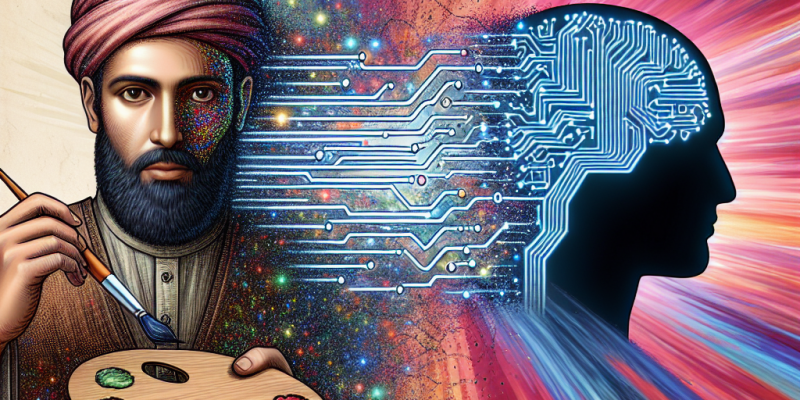Unleashing Creativity: How Generative AI Models are Redefining Art and Design

In recent years, generative artificial intelligence (AI) models have emerged as powerful tools that are reshaping the landscape of art and design. By leveraging vast data sets and complex algorithms, these models can create original works ranging from visual art to music, literature, and even architectural designs. As the boundaries between human creativity and machine-generated content blur, the implications for artists, designers, and the creative industry as a whole are profound.
The Rise of Generative AI in Creativity
Generative AI refers to algorithms that can generate content autonomously, given a set of parameters or prompts. By analyzing patterns in existing data, these models can produce new creations that exhibit unique styles and characteristics. Technologies, such as Generative Adversarial Networks (GANs) and transformers, are at the forefront of this transformation. For example, GANs consist of two neural networks—a generator that creates images and a discriminator that evaluates them—allowing for continuous refinement of output until high-quality visuals are achieved.
Programs like OpenAI’s DALL-E and Stability AI’s Midjourney have captivated audiences by turning textual prompts into stunning visuals. These AIs can create artworks that mirror the techniques of famous artists or invent entirely new styles, expanding the possibilities for visual expression.
Redefining the Creative Process
Generative AI models are not just tools; they are collaborators that redefine the creative process. Artists and designers can leverage these technologies to bypass creative blocks, explore new aesthetics, and generate ideas that might not have emerged through traditional means. Instead of viewing AI as a competitor, many creatives are embracing it as a partner—an extension of their imagination that aids in experimentation.
For instance, designers can utilize AI to generate multiple iterations of a product design, exploring different materials, colors, and shapes. This not only speeds up the design process but also enhances innovation, allowing for outcomes that are as unexpected as they are groundbreaking. Similarly, musicians are employing AI to compose melodies and harmonies, resulting in collaborative pieces that blend human and machine creativity.
The Democratization of Art and Design
One of the most exciting aspects of generative AI is its potential to democratize art and design. By lowering the barriers to entry, these technologies enable a wider range of individuals to engage in creative practices. Anyone with access to AI tools can generate art, regardless of their prior experience or formal training. This has led to a flourishing of diverse voices and styles, enriching the global creative landscape.
Platforms like Artbreeder and Runway ML allow users to experiment with AI-generated images without requiring extensive knowledge of programming. As a result, hobbyists and aspiring artists can explore their visions uniquely, fostering greater inclusivity within the community. Furthermore, this democratization raises crucial questions about authorship, ownership, and the definition of creativity itself.
Challenges and Ethical Considerations
Despite the exciting potential of generative AI, several challenges and ethical concerns accompany its integration into art and design. One major issue revolves around copyright and intellectual property rights. When a machine produces an artwork, it raises questions: Who owns the rights to that piece? The user who prompted the AI? The developers of the AI model? This gray area necessitates a reevaluation of existing laws and regulations.
Moreover, there’s the risk of perpetuating biases inherent in the training data. If an AI model is trained on a limited or skewed dataset, it may produce results that reflect those biases, affecting underrepresented groups in the creative industry. Responsible AI development requires diverse data sets and ongoing evaluation to ensure inclusivity and accuracy.
The Future of Creativity
As generative AI continues to evolve, its impact will likely become even more pronounced. Future possibilities may include more sophisticated models that integrate real-time user feedback, allowing for even greater interactivity and customization in the creative process. In education, generative AI may redefine how art and design are taught, offering personalized learning experiences for students.
Ultimately, the intersection of generative AI and creativity invites us to contemplate the essence of artistic expression itself. As we navigate this new frontier, it is crucial for creators, technologists, and society to engage in meaningful dialogue about the implications of these advancements. In embracing generative AI, we can unlock unprecedented possibilities, empower a new generation of artists, and redefine what it means to create.
In conclusion, generative AI models are not just reshaping the tools of artistry and design but are also transforming the very fabric of creativity itself. By blending technology with imagination, we stand on the brink of a new artistic renaissance—one that holds promise for both the present and the future.














